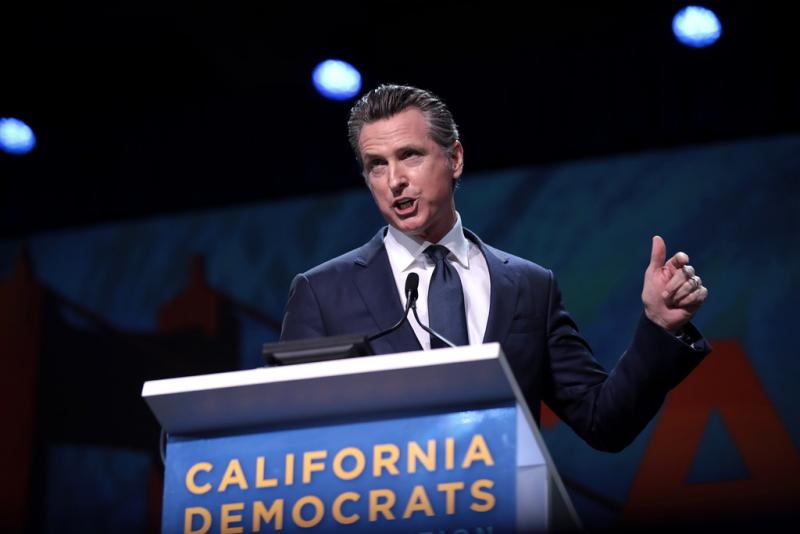
In his 2021 revised state budget, Governor Gavin Newsom (D-Calif.) recently proposed yet another new tax on electronic cigarettes and vapor products. Taking aim at low-income consumers, this tax would raise taxes on adults who are attempting to quit smoking at a time that most adults can least afford it. The proposed budget also includes significant limits on tax credits and deductions for businesses and employers, resulting in billions of dollars in new and higher taxes beginning on July 1.
Newsom’s $33 million higher tax on vaping would disproportionately hit low-income Californians. Data from the Health Education Council reveals that Californians making less than $25,000 are already twice as likely to smoke compared to those Californians making over $50,000 a year. Levying additional taxes on smokers who are trying to quit takes aim at those adults experiencing the greatest financial uncertainty and struggles in the midst of Covid-19.
This new tax on vaping would not be the first. In 2016, Californians were among the first in the nation to institute a statewide excise tax on nicotine vapor products. 59 percent of voters voted for the ballot initiative that raised the state cigarette tax and changed the definition of a tobacco product subject to taxes to include e-cigarettes. Today, 21 states have instituted similar taxes ranging from a tax of 5 cents per milliliter of liquid in North Carolina, Kansas, and Louisiana to a 95 percent wholesale tax in Minnesota. Governor Newsom’s new budget, however, would make California’s tax the highest in the nation by adding an additional layer of taxation to the sale of these products.
Differences between the structure of vaping taxes across the country vary based on the point in the supply chain where taxes are imposed and the part of the product that is taxed. Wholesale value taxes are determined by the cost for retailers like vape shops to purchase a unit, while volume taxes are determined by the amount of liquid in a vaping device. California’s proposed budget would combine the two methods, adding both the current wholesale tax of 59% with a new $2 tax per 40 milligrams of nicotine per unit.
By creating a taxing pyramid in this way, e-cigarettes in California would actually be taxed at a higher rate than combustible cigarettes. Beginning in 2017, cigarettes were taxed at a rate of $2.87 per pack. Other tobacco products and e-cigarettes are subject to a variable equivalent tax which varies based on the price of cigarettes annually. A product like JUUL is currently taxed at a rate of 59% or $2.36 per JUUL pod. Under Newsom’s proposal, that tax would increase an additional $3.50, making the total tax on one JUUL pod product $5.86. For an adult smoker trying to transition from a Marlboro or American Spirits cigarette to a JUUL e-cigarette, the cost in taxes would be much higher to vape under the governor’s proposal.
Taxing e-cigarettes at a higher rate than cigarettes stands in stark contrast to the data suggesting that e-cigarettes are significantly less harmful than cigarettes for consumers. Both Public Health England and the Royal College of Physicians have concluded that e-cigarettes are at least 95% less harmful than cigarettes. As such, taxing them at a higher rate is reckless health policy.
For adult smokers seeking a less harmful nicotine alternative, e-cigarettes are demonstrably more effective as other quit tools. Research from the New England Journal of Medicine reveals that e-cigarettes are nearly twice as effective as the nicotine patch, lozenge, or gum at getting adult smokers to quit.
The negative consequences of increasing taxes on e-cigarettes have already been proven in the U.S. After Minnesota imposed a 95% wholesale tax on nicotine vapor products in 2013, the Bureau of Economic Research estimates that over 32,000 Minnesotans were discouraged from transitioning away from cigarettes as a result of the tax. Gavin Newsom’s new tax would clearly discourage Californians from quitting smoking.
For those adult vapers who refuse to go back to smoking, some may look to the black market for e-cigarettes. Newsom’s new vaping tax will push countless adults to seek out new products online, across state lines, or in unregulated markets that are not subject to state or federal regulatory scrutiny. The long history of tobacco smuggling shows that consumers regularly seek out less expensive options in these ways. Evidence from 2017 reveals that of all cigarettes smoked in California, nearly 45% were smuggled in from out of state to avoid high state excise taxes. Raising excise taxes on e-cigarettes will undoubtedly cause a similar reaction, reducing state revenues and increasing illicit trade in America’s biggest state.
Ironically, both the governor and state legislature acknowledge the risks of high excise taxes leading to black market sales. This year, Newsom embraced a reduction in the state taxes imposed on marijuana in California. The lead sponsor of a bill to reduce the excise tax on marijuana sales from 15 percent to 11 percent explained that the move would “reduce and shrink the unlicensed, illicit market” which is estimated to be 75 percent of the total state market. Two-thirds of the entire market is still black-market sales, despite the fact that marijuana has been legal for more than two years.
California lawmakers should reject efforts to raise taxes on nicotine e-cigarettes and vapor products. These regressive taxes target adult smokers trying to transition to less harmful products while pushing consumers to unregulated black markets. Decades of evidence suggests that consumers will almost always seek out less expensive options, depriving the state of even more tax revenue, while harming the legal businesses in the state who simply want to provide smokers with better options.

